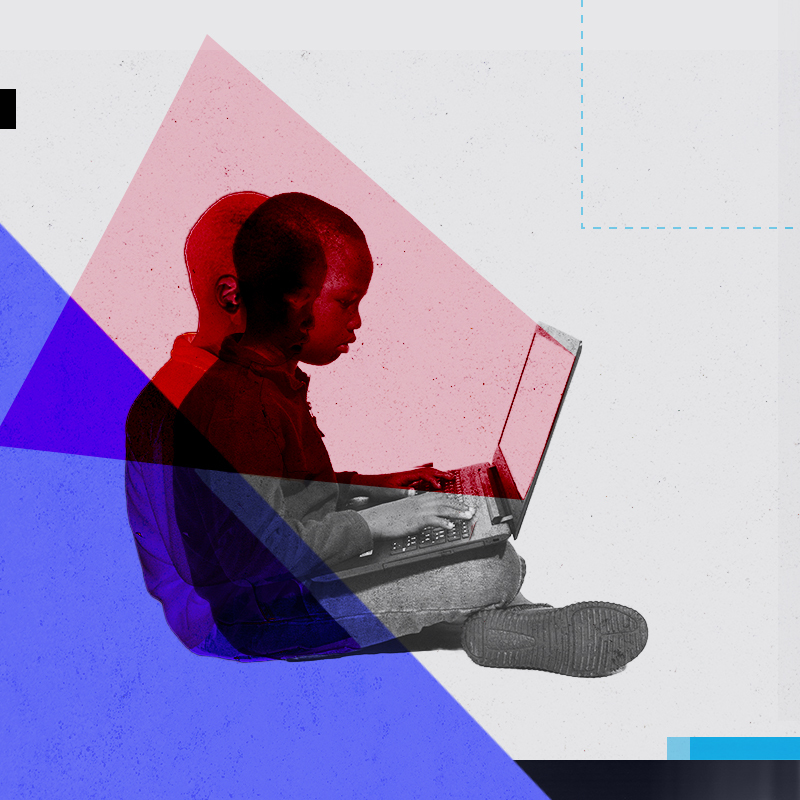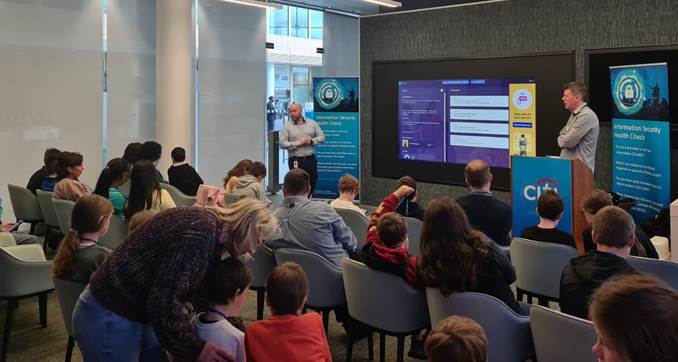
The Global Cyber Security Forum says that 72% of children worldwide have experienced at least one type of cyber threat online.
Young people today will build a lifelong digital footprint – using countless apps, digital services, and tools to complement their lives. This high usage means they’re highly likely to be bombarded with information and requests throughout their lives.
It’s vital children learn about staying safe online from an early age, as they’ll inevitably face both digital threats (such as malware and account compromises) and social threats (like scammers and predators). Given this reality, there’s never been a more critical time to develop and deliver good quality digital lessons for life.
At Immersive Labs, we help organizations continuously assess, build, and prove their cyber workforce resilience. The world’s largest organizations trust us to prepare them for the next cyber attack. We believe in a world where everybody has the knowledge, skills, and judgment to effectively respond to cyber threats.
We’re also very passionate about supporting our local community and one of our company values is inclusion, especially in cybersecurity. So, when Citi asked us to help them deliver a session to children, we were delighted to help!
The generational divide
We’re all familiar with Gen Z, Millennials, and Boomers. But the renowned educationist Marc Prensky’s theory instead frames this divide between digital immigrants and digital natives – those born and raised before the internet and those surrounded by interconnected technology from birth.
Imagine you’re teaching an elderly relative how to use software they’ve never encountered. Imagine teaching the same thing to an eleven-year-old who hasn’t yet seen it. Would you use the same approach and tools?
The answer is that it depends! It’s hard to know what transferable experience and knowledge people have. What works for one 60-year-old can work equally well for a 14-year-old.
The key is to make whatever information you’re delivering engaging. Stories, interactivity, multimedia assets, and relating the subject matter to your audience’s lives are all strategies that support knowledge transfer.
The event
Citi Dublin hosted their annual Bring Your Child To Work Day in April. 130 children aged between eight and 12 were invited on-site for a morning of activities and learning.
The Senior Vice President at Citi Dublin, Phil Hayes, was approached by the parents organizing the event to see if he would be interested in discussing cybersecurity and staying safe online with the children.
As Phil uses Immersive Labs’ Cyber Crisis Simulator for many internal and client exercises, he immediately thought the interactive tool would be a great way to engage with the children while delivering important messages.
The exercise
As the Cyber Workforce Equipping Lead at Immersive Labs, I designed and wrote a Cyber Crisis Simulator scenario called Safety First, covering essential topics young children face.
We tried to keep the simulation as close to the children’s lives as possible, so we started with gaming environments. The participants were posed with the dilemma of what to do when a stranger approached them in a game world and offered them a link to a seemingly amazing free cheat website. Just like in the real world, stranger danger is important in online environments.
The session moved on to spotting dodgy websites – could the children tell the difference between a legitimate site and a scam? What if they need to buy a present for their best friend and it’s an excellent deal?
We also highlighted the importance of keeping your software up to date. We asked the children what they would do if a critical update were required on their computer, but they were halfway through their homework.
Next, we explored the dangers of unsecured networks. Say they want to log in to the Wi-Fi in a cafe with a gaming device, but several network options are available, including some enticing but dangerous options. What would the children choose to do?
With various images, videos, and engaging narratives, the kids were absorbed by the questions and threw themselves into the scenario.
The approach
I enjoyed working on this project with Citi and had so much fun! I wanted to include natural pauses so Phil and the team could ask the children questions, provoking discussion and including all participants. This strategy lent itself well to the Crisis Sim presentation mode, where the Citi team could display each problem on the screen, show off the media assets, and ask direct questions to the audience before they voted for their decision.
Many of these children hadn’t met before the event, so making the activities as interactive as possible and for everyone to get involved was essential. I’m glad it was a success, and hopefully, everyone had fun while learning some important life skills!
The feedback
Phil told Immersive Labs that the children enjoyed the session and the feedback was excellent:
“There was some brilliant interaction between the hosts, parents, and children, checking their level of knowledge of current cyber threats like phishing and ransomware, which was much better than I imagined! The reaction on the day was fantastic. Parents and children alike really embraced the scenario and the interactive way the workshop was delivered.”
This feedback indicates that both adults (especially employees) and children (our future employees) can respond well to exciting and interactive ways of learning.

There was some great feedback from participants on the day:
“Just a short note to say thanks so much for all you did to contribute to the huge success of today’s Bring your Child to Work event! You went above and beyond to ensure the event was interesting, appropriate, and relevant. The Immersive Labs goodie bags were a huge hit!”
Another parent told us, “This is fantastic. Well done! I love the photos, too. This is our future. Hopefully, you’ve inspired many of them to pursue cyber as a career!”
Hopefully, the children will grow up to be the next generation of cyber pros – but even if not, hopefully more aware of threats and better able to handle them.
The future
Legacy tabletop training fails to prepare teams and individuals for modern, advanced cyber threats – leaving security leaders uncertain and organizations exposed.
At Immersive Labs, while our content is focused on professionals and not children, we still believe that engaging, vibrant, hands-on exercising builds muscle memory far better than any traditional legacy training. This approach will enhance teams’ ability to perform in a crisis and learn the skills required to tackle any threat.
“The reason this [revolution in the way we teach and train people] will happen, and happen soon, is that learners will demand it to the point that management, teachers, and administrators can no longer resist. The workers of the Games Generations will no longer accept, attend, or do training that is boring.”
To learn more about enacting cyber crisis simulations at your organization, click here.






